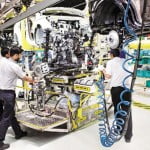
The steep drop in solar power tariffs, which fell below Rs.5 toRs.4.60 per unit in a recent auction, not only gave a leg-up to the Union government’s renewable energy strategy, but also strengthened its belief that renewable energy can be an affordable alternative to conventional energy sources.
Minister for power, coal and renewable energy Piyush Goyal had tweeted that he is “delighted” that an all-time low solar tariff has been achieved. Earlier auctions saw tariffs in the Rs.5-6 per kilowatt-hour range. Last year’s auctions saw lowest bid prices at around Rs.6 per unit.
But not everybody is impressed. Mercom Capital Group, which tracks the sector, says industry stakeholders are worried about the viability of such low tariffs as project costs—especially solar module prices—did not fall at the same pace. Modules make up around half of solar power project costs.
“In our channel checks, we are not seeing a significant enough drop in component prices to justify a 20-30 percent drop in bids. If anything, prices are solidifying as the year-end rush is creating a shortage putting upward pressure on prices. Looking at Chinese module spot price trends in 2015, the price drop is about 8 percent in the first six months after which it has held steady,” Mercom Capital said in a recent report.
Several factors—including the Chinese year-end rush due to a renewed installation goal and an expected rush in the US in 2016 prior to the expiry of an investment tax credit—can see module prices holding steady, said Mercom Capital. Add to this the finance and hedging costs and unsteady land prices, and concerns are being raised over the viability of solar projects that are bid at aggressive tariffs.
According to Mercom Capital, the pent-up demand and the assumption that component costs will continue to trend lower is driving the bids lower. But if costs do not fall as expected, then the projects can be at risk. “Industry participants are worried that if this continues, we might be headed in the same direction as infrastructure/road projects in India where a similar ‘lowest bid wins’ concept has been a disaster with many winning bids resulting in stalled or abandoned projects because they were financially unviable from the start,” added Mercom Capital.
Overall, even as solar tariffs are close to achieving grid parity or becoming affordable, questions are being raised about the sustainability of such low rates.




